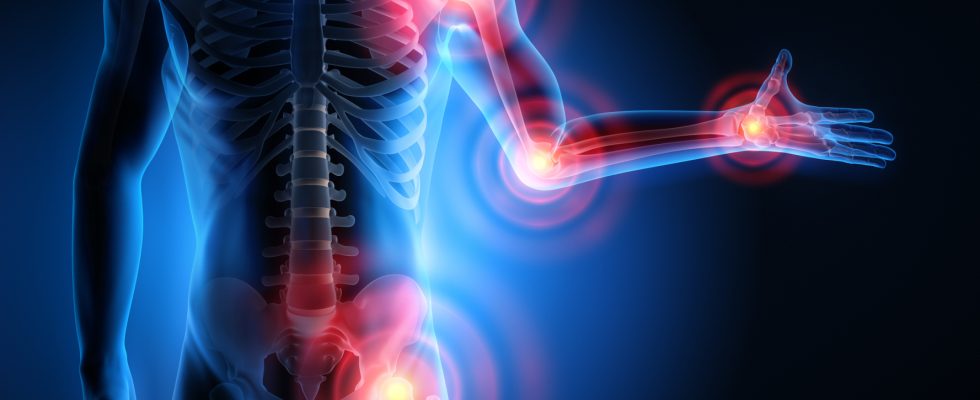When joints and tissues suffer: Researchers are increasingly understanding the causes and mechanisms of rheumatic diseases, reports bild der Wissenschaft in the April issue. In this way, new forms of treatment and procedures for the early diagnosis of the various forms of the disease can be developed in order to help those affected more and more effectively, according to the title story.
Millions worldwide suffer from the painful and destructive processes in the body: Rheumatic diseases are among the most common health problems affecting people and can take on severely disabling and dangerous forms. The best known and most common version is rheumatoid arthritis, which causes chronic joint inflammation. But there are more than 100 other rheumatic diseases that, in addition to joints, can also damage the nervous system or various organs of the body – from the heart to the eyes.
In the first article of the three-part title topic “Help with Rheumatism”, bdw author Rainer Kurlemann first gives an overview of the different forms of the disease. The umbrella term rheumatism refers to many different symptoms, some of which have significantly different causes and mechanisms. For many, however, it is a form of autoimmune disease – the body’s own defenses attack joints and tissue and cause inflammation and destruction. For many types of rheumatism, there have been enormous advances in treatment options and procedures for important early diagnosis over the past 30 years, reports the author. Researchers are currently working on other promising strategies, according to the article “Victory over rheumatism in sight”.
About memory cells of the immune system and “children’s rheumatism”
In the second part of the article, Kurlemann looks more closely at the role of autoimmune reactions in some rheumatic diseases. Using modern analysis methods, researchers are gaining more and more insight into the body’s sophisticated but also vulnerable defense system. Environmental influences, a disturbed intestinal flora and also genetic factors can lead to the body police attacking certain tissues and thereby causing some forms of rheumatism. These findings are currently being used intensively to develop new therapies. There have already been successes, reports the author in the article “The Secret of Memory Cells”.
The third article in the title topic makes it clear that rheumatism is not just a disease of old age: people can be affected in every phase of life – even in childhood. As bdw author Sigrid März reports, it is estimated that more than 40,000 children and young people in Germany alone are affected by classic rheumatoid arthritis and other similar diseases. Specifically, the author focuses on the fate of a 15-year-old who suffers from the rheumatic disease lupus. Chronic inflammation in the body is particularly problematic in children and adolescents as it can affect their development. However, if diagnosed early, there are treatment options and current developments also give reason for hope, writes the author in the article “Rheumatism at a Young Age”.
You can read the articles on the cover topic “Help with Rheumatism” online as part of a bdw+ subscription, or you can find them in the April issue of bild der Wissenschaft, which will be available in stores from March 15th.

